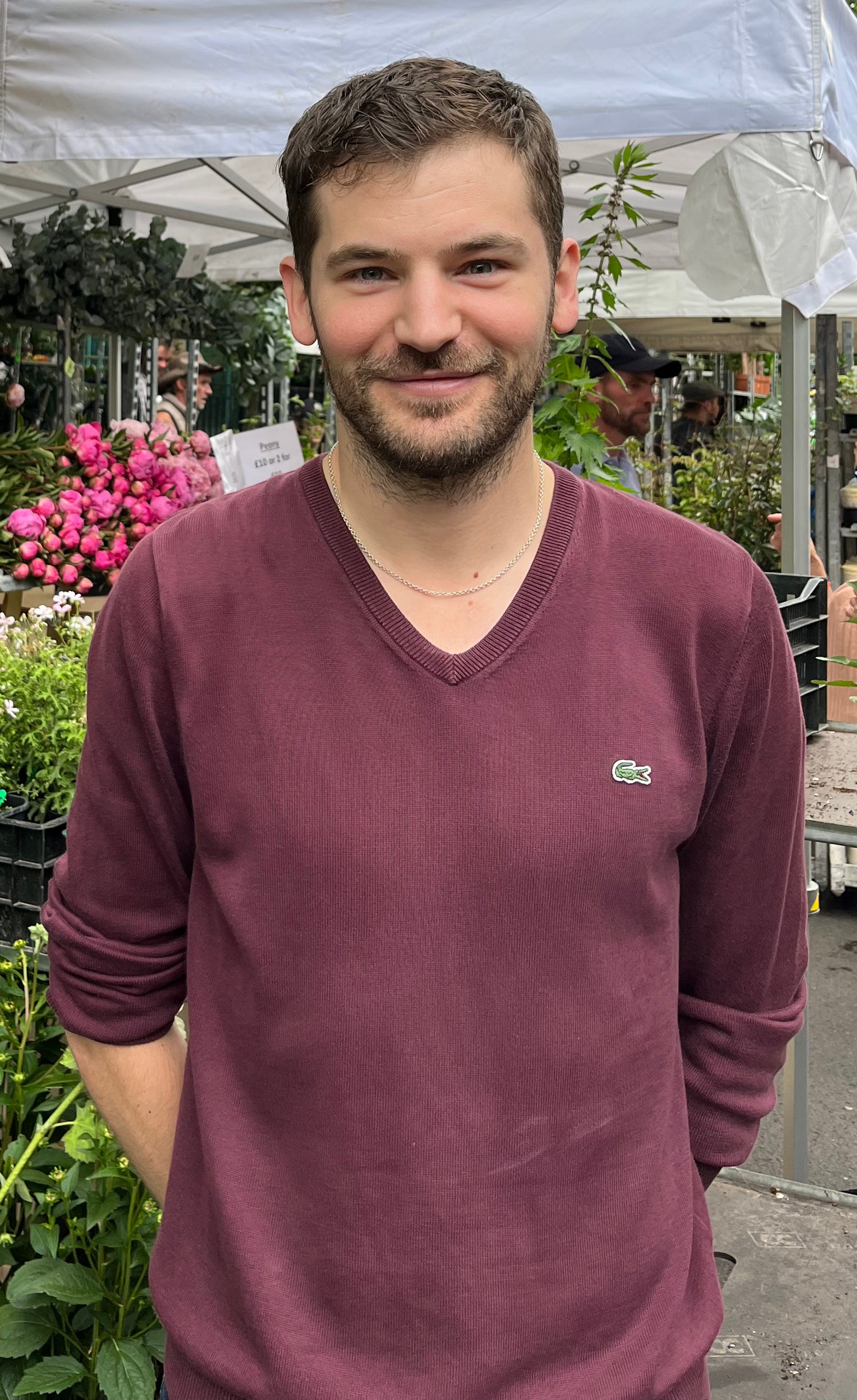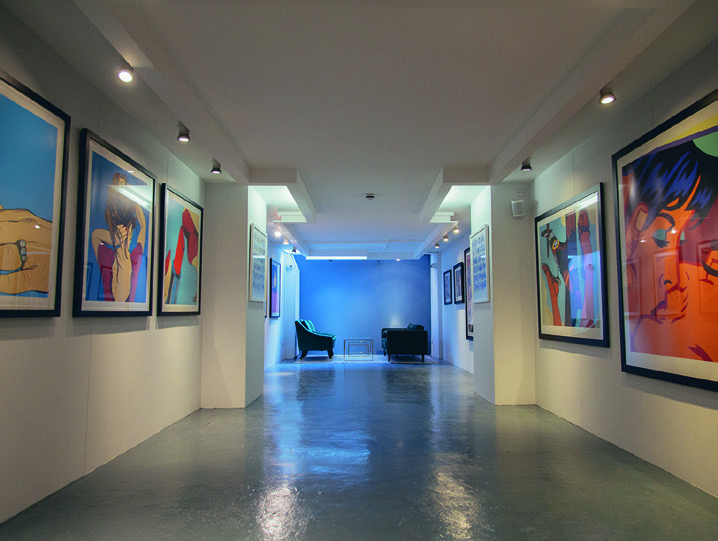The Art Investment Fraud Resulting in £13.8 Million Loss for Investors
Philip Remillard sought alternative investment opportunities to diversify his financial portfolio when he discovered Smith & Partner (S&P), a company specializing in limited-edition art pieces.
The 31-year-old gold trader from east London visited S&P’s gallery in Kensington, where he met several artists. Promotional materials from the firm advertised potential returns of up to 64.6% within a year, requiring an upfront fee of 2% and a 5% profit share upon selling the artwork.
Between October 2021 and May 2022, Remillard invested £92,000 in a collection of 33 prints, which were kept in a secure location in Switzerland under S&P’s management for sales.
To date, only a single artwork has been sold. Remillard purchased a piece titled Hypnotic Reveal by Stuart McAlpine in April 2022 for £2,000, which was sold in February 2023 for £2,178.
“They constantly provided excuses for the lack of sales. The one sale occurred only after I persistently sought updates, but they soon went silent again,” Remillard explained.

Months later, the company entered liquidation, with liquidators estimating that Remillard’s investments are now valued at approximately £15,000.
“This represents a substantial financial loss and has drastically affected my life. Recovering my funds has become a time-consuming endeavor,” he stated.
Believing he is a victim of fraud, Remillard requested a refund from his bank, HSBC, under a voluntary code designed to compensate victims of fraud. HSBC declined his request, asserting that S&P was a legitimate enterprise that simply failed.
According to HSBC, this situation was classified as a civil issue, necessitating Remillard to wait for the liquidators to settle outstanding creditors. Following this, he filed a complaint with the Financial Ombudsman Service (FOS), but it concurred with HSBC’s assessment. Remillard is currently appealing this decision.
Understanding the Breakdown
S&P was established in 2015 by an Austrian national but was subsequently acquired by new managers. From 2018 to 2023, the business was overseen by Luke Sparkes, a UK businessman based in Dartford, Kent, according to Companies House.
Promoting itself as an investment firm, S&P claimed to manage clients’ entire portfolios while assigning them a dedicated art broker. In 2021, its net assets were reported at £15,645, based on the latest filings at Companies House. The company appointed voluntary liquidators in August 2023.
Marco Piacquadio and Dane O’Hara from FTS Recovery are responsible for unwinding the business, liquidating assets, and repaying creditors.
FTS Recovery has initiated legal action against S&P for fraudulent trading and breaches of fiduciary duty under the Insolvency Act 1986. A court date on October 4 led to a freeze order on Sparkes’ assets as part of this case.
FTS has characterized S&P as involved in a deceptive art investment scheme, claiming that Sparkes misappropriated approximately £5.9 million from the company, largely in the form of dividends.
This asset freeze was broadened to include Zeno Fine Art, another venture by Sparkes established in 2021 for marketing art investments, as well as Callum Ahearne, identified as a senior associate of S&P. The liquidators assert that the dividends disbursed to Sparkes were ill-gotten gains derived from fraudulent activities.
Additionally, a portion of Sparkes’ corporate entities and relatives reportedly received funds from the scheme, with Zeno Fine Art receiving around £3.5 million.
FTS Recovery contended that the artworks were never marketed to genuinely generate profit, stating, “Thus, there is simply no legitimate profit for investors due to the absence of real market value increases.”
The brochure’s mention of the 64.6% profit was allegedly based on a singular transaction involving the acquisition of a Steven Dews print, with claims that certain artworks were sold back to investors rather than on the open market.
John Steven Dews, a maritime artist, has no affiliation with S&P.
The liquidators noted a lack of evidence supporting S&P’s assertion of a network of “private auctioneers and collectors” as described in their promotional materials.

The Impact on Investors
Affected investor Hannah Knight, whose name has been changed, invested £55,000 in 23 artworks after receiving a cold call from S&P in September 2021. Three of her prints were sold for minimal profit, including The Mighty Westward by Dews.
Upon S&P’s liquidation, Knight, 69, learned that only £10,000 of her investment was accounted for in Switzerland, while the whereabouts of the remaining £42,000 remain unclear.
“I am uncertain about the allocation of my funds. I conducted thorough research before investing, believing I was making an informed decision. This entire ordeal has been a complete disaster,” she commented.
Similar to others, Knight was advised to enhance the likelihood of selling her portfolio by purchasing additional prints.
“Sales representatives specifically mentioned that our collections were headed for auction in Dubai, but this turned out to be entirely fabricated,” the liquidators remarked, alleging that S&P charged investors inflated prices for the artworks.
Sparkes has claimed that S&P imposed a standard industry mark-up of 100% on the artworks’ wholesale prices. However, FTS Recovery estimates that the actual average mark-up was closer to 495%.
In a ruling allowing the asset freeze, Sir Julian Flaux, the High Court Chancellor, conveyed his agreement with the liquidators’ perspective that S&P misrepresented its operations to the public.
He stated that ample evidence from a substantial sample of investors indicated a strong case that they were misled. The evidence suggests that Sparkes orchestrated a large-scale art fraud affecting over a thousand investors and misappropriated the profits for personal gain.
Legal proceedings are still underway.
In June 2023, Knight contacted her bank, Lloyds, seeking to reclaim £42,000 for artwork she never received. Citing a civil dispute between her and S&P, Lloyds initially denied her request. After filing a complaint with the ombudsman via the claims firm Refundee, Lloyds later agreed to reimburse her along with an additional £3,000 in interest.
Refundee, which retains 15 percent of all recoveries plus VAT, has successfully secured refunds totaling £383,730 for six S&P investors, all of whom were Lloyds clients.
Claims amounting to £2.1 million on behalf of 40 additional investors have also been submitted to 12 banks but were rejected. It is estimated that approximately 1,000 investors have been impacted, leading to a total investment loss of £13.8 million.
Both Remillard and Knight have reported their cases to law enforcement, and investigations are ongoing.
Lloyds stated that Knight was reimbursed prior to the ombudsman’s ruling and affirmed its policy of assessing each fraud claim on an individual basis, with a majority receiving refunds.
HSBC clarified its denial of refunds by citing S&P’s registered status with Companies House, its physical gallery in London, and positive online feedback. The bank mentioned it is currently reviewing new information provided by the ombudsman.
HSBC remarked, “This is an active complaint amidst an ongoing police investigation, and we are engaged in continued discussions with both the ombudsman and the police towards a resolution.”
The FOS indicated that if significant new evidence emerges after a case is closed, affected customers are welcome to request a reassessment of their complaint.
Stuart McAlpine expressed regret over becoming embroiled in this troubling situation, stating, “I am deeply saddened that art investors have been negatively affected. I am committed to rectifying the situation by providing alternative artworks to disappointed collectors whenever feasible.”
Luke Sparkes’s legal representative insisted, “Mr. Sparkes maintains his innocence regarding the allegations and is confident that the court will ultimately vindicate him during the trial.”
Attempts to reach Callum Ahearne for comment were unsuccessful.




Post Comment